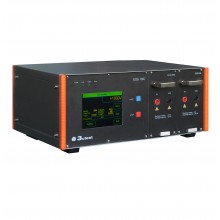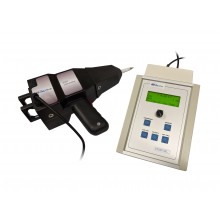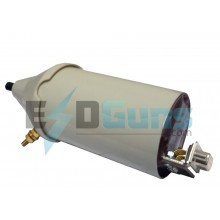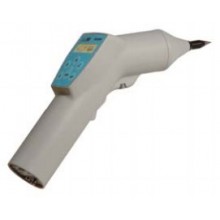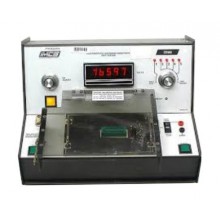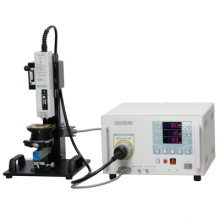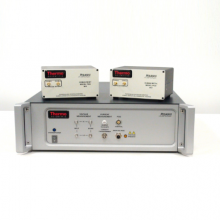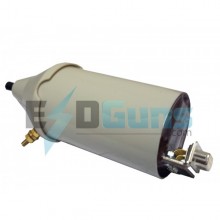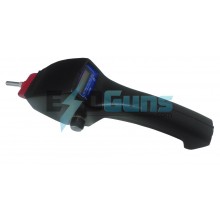No products
Product successfully added to your shopping cart
There are 0 items in your cart. There is 1 item in your cart.
HBM / MM ESD Simulators
Viewed products
-

Electro Tech Systems...
±5 Volts to 8 kV (Adjustable down to...
Best sellers
-

Schaffner / Teseq NSG 435 ESD Simulator for IEC 61000-4-2
Programmable discharge voltage 200 V to 16.5 kV Stabilized charging...
$590.00 -

ESDGuns.com GRC Series Ground Cable w/ 470k Ohm Resistors for ESD Voltage Bleeding
Ideal for voltage bleeding to Ground Plane during Indirect ESD Immunity...
$199.00 -

Rent Keytek Minizap MZ-15/EC 15kV ESD Simulator Gun
Rentals Ship Immediately Purchase Options See: Used Keytek Minizap ESD...
$495.00 -

ESD Guns IF Insulating Foil for ESD Compliance Testing
Suitable for EN/IEC 61000-4-2 ESD immunity compliance testing...
$197.00 -

Teseq / Schaffner INA 405 Ni-Mh Battery Pack Refurbishment for NSG 435 ESD Gun
ESD Guns can refurbish your existing INA 405 battery pack. Expected...
$275.00 -

Haefely ONYX 16 kV ESD Generator Gun
Rental Package IncludesAir and Contact Discharge Tips Output...
$595.00 -

Teseq NSG 437 Electrostatic Discharge (ESD) Simulator Gun for GR-1089 & IEC 61000-4-2
Air- and contact-discharge to 30 kV Color touch panel control Advanced...
$895.00 -

3ctest EDS 20H Hand-held 20kV Electrostatic Discharge ESD Simulator
Air- and Contact- Discharge: 1000 Volts - 20kV ±5% Rise time: 0.6-1ns RC...
$476.00
Electro Tech Systems (ETS) 9910 Multi-Pin ESD Simulator for Microelectronic Devices
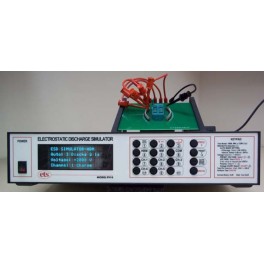 View larger
View larger New
- ±5 Volts to 8 kV (Adjustable down to 1 Volt Steps)
- 1-5 Channel Discharge Selection
- Tests Most Device Configurations
- Meets Human Body (HBM) Model Mil-STD-883E, ANSI/ESD/JEDEC JS-001-2010 (formerly ANSI/ESD-STM5.1 & JESD A114B)
- Meets Machine Model (MM) ANSI/ESDA/JEDEC JS-001-2010, ANSI/ESDA STM 5.2, JEDEC 22-A11
- Custom Resistance/Capacitance Networks Available
- Programmed Test Voltages

More info
Electrostatic discharge (ESD) has become a significant factor contributing to the disruption of electronic equipment or the premature failure of microelectronic devices in both the field and during the manufacturing process. Sensitivities below 30V are now common. Since it is not always possible to control the environment where electronic devices are used or handled, the burden of product reliability falls upon the manufacturer to design and build equipment with reduced susceptibility to ESD. The Model 9910 ESD Simulator is an invaluable tool in developing components for use in today’s military, industrial and consumer applications.
The Elecro Tech Systems (ETS) 9910 Multi-Pin ESD Simulator for Microelectronic Devices is a bench top ESD Simulator designed for laboratory or low pin count testing.
The Model 9910 is a microprocessor-based instrument that can be operated manually via the front panel keyboard or by computer control. Voltage is adjustable in 1 Volt increments. In addition, the user can program up to 9 preset voltages from ±5 to 8250V. Two modes of operation are available:
In MANUAL mode, a Discharge is initiated each time the DISCHARGE button is depressed. In the AUTO mode, the number of discharges (0-99) and the interval (1-99 sec.), selected by the user, are activated when the DISCHARGE button is depressed. Typically, each device pin combination is tested at both polarities using 3 discharges at 1 second intervals.
The discharge circuit consists of mercury high voltage relays for bounce-free operation, programmable selection of HBM, MM or CDM (optional) testing plus a switched output for connecting the Device Under Test (DUT) pin to a curve tracer or similar instrument.
The Model 9910 also offers the optional capability to connect 2-5 additional discharge channels to the DUT (ground remains common). Each channel is selected by the user in the keyboard mode by pressing the appropriate key or by the computer in the Computer Control mode.



